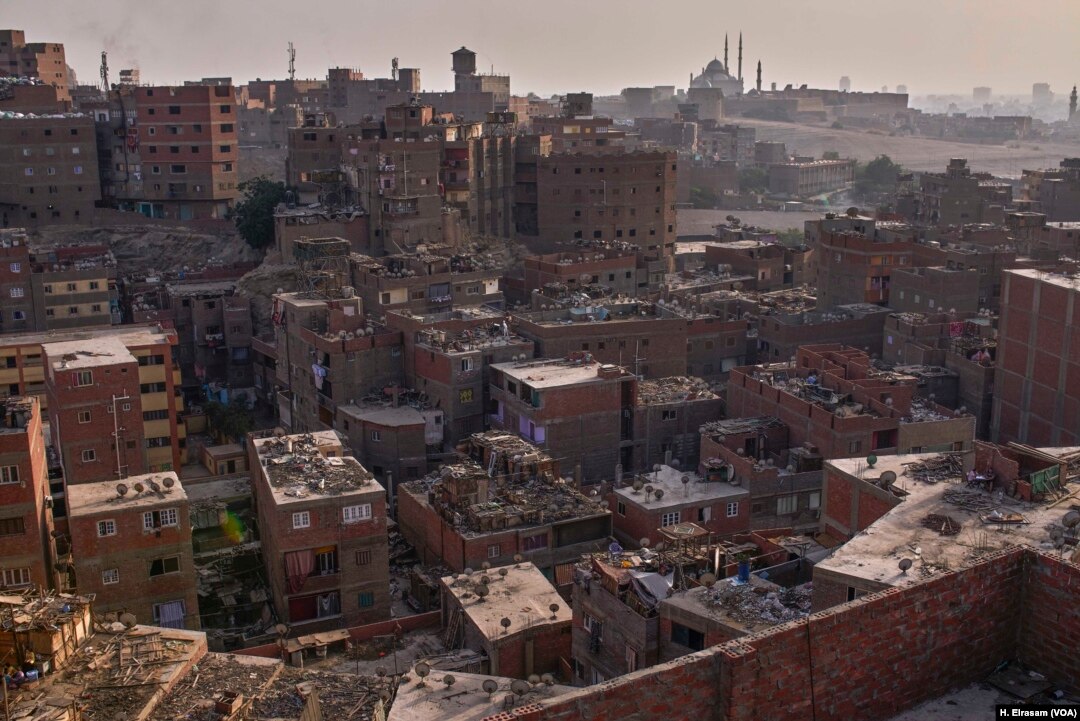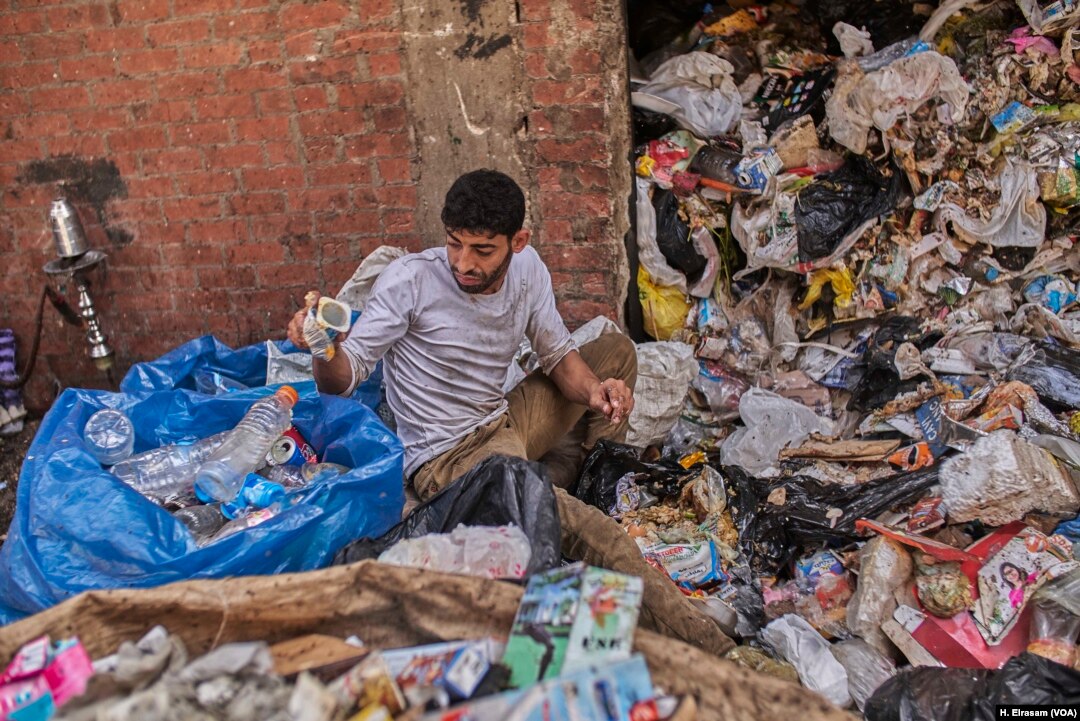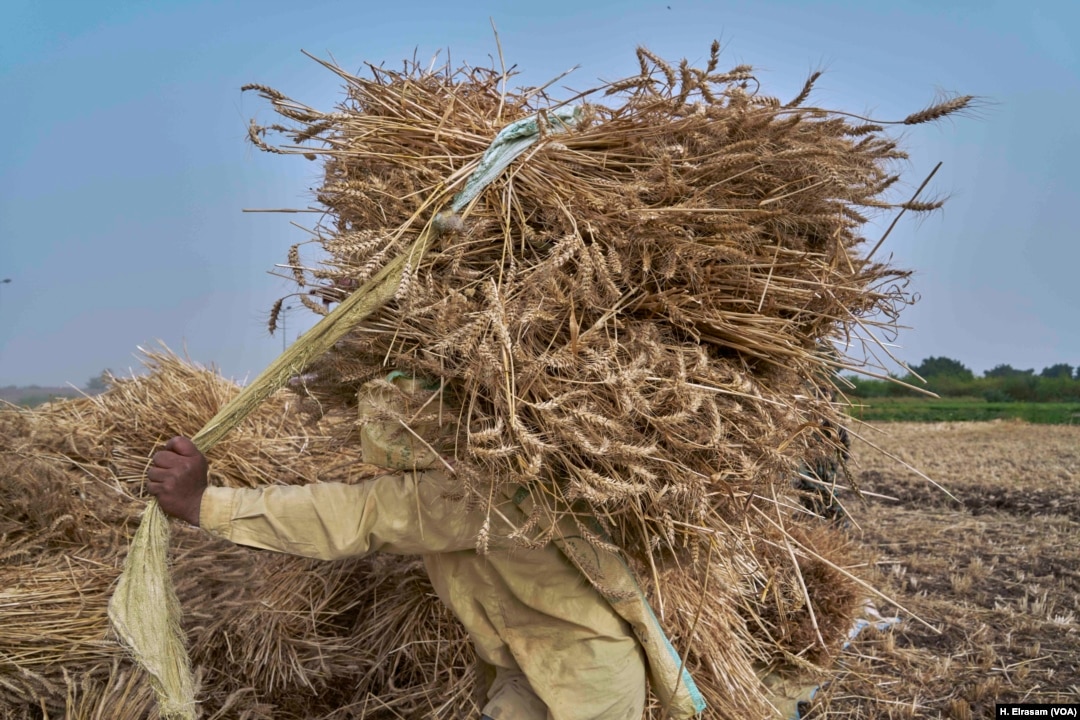Uprkos neuhranjenosti velikog broja dece, Egipćani imaju običaj da bacaju hranu

A view of Manshiyat Nasser, an impoverished eastern Cairo district known commonly as “Garbage City,” where the capital’s garbage and food leftovers are dumped and, in some cases, recycled. The Association for the Protection of the Environment, an NGO in Cairo, says almost 40 percent of food in Egypt is wasted.

Osama, a worker and resident of Manshiyat Nasser, separates garbage for recycling. Cairo’s Garbage receives 14,000 tons of garbage every day, nearly half of it organic waste, according to the Association to Protect the Environment.

An Egyptian farmer in Qalyubia governorate, in the Nile River Delta, carries a load of wheat after harvest. The food waste starts from the production and harvesting stages due to what environmentalists describe as technical, social, economic, and practices.
Trash blows into a ditch used for irrigation in Al-Marg, a low-income district north of Cairo. Access to water that is free from garbage and industrial pollution is a challenge for many Egyptian farmers.
In Al-Marg, school workers say families often send children to school without enough food for the day. Many are anemic, and some have trouble concentrating in class. UNICEF reports Egypt is one of the 20 countries in the world with the highest number of children suffering from chronic malnutrition or stunting, and also ranks high when it comes to undernutrition, micronutrient deficiencies and obesity.
Schools try to help by collecting donations. A school official at Al-Ma’had Aldeany school in central Cairo says, “We try our best for them.”
Young Egyptians’ over-consumption of sugary treats and fast food contribute to hyperactivity and undernutrition, say nutrition advocates.
Christen Nabil, a resident of Cairo’s “Garbage City,” lives with a needle in her arm to deliver medication and nutrients. She was diagnosed with intestinal inflammation, which she attributes to poor food quality.
Musa Nazmy, a Garbage City resident, empties an expired can of beans that will be used in a biogas system that has been installed in his neighborhood. Biogas production is one way some people are starting to make use of food that would otherwise be wasted.
Nazmy learns how to use food waste to run a biogas system under a program funded by the U.S. government. The U.S. Agency for International Development, USAID, partnered with the Egyptian government four years ago to train and educate residents. “The system produces bio-gas enough for almost 2 hours,” which Nazmy says means substantial savings in power costs.

